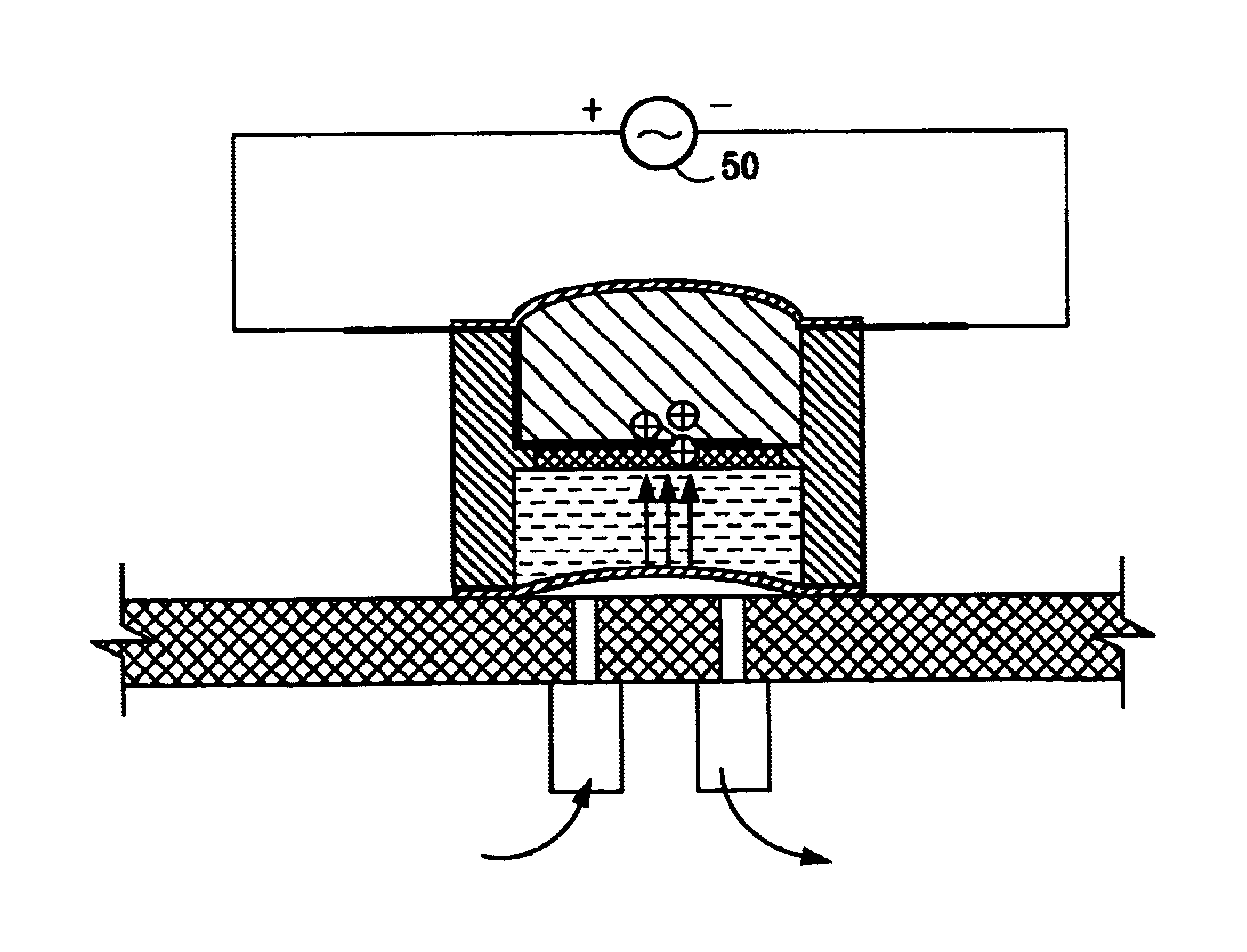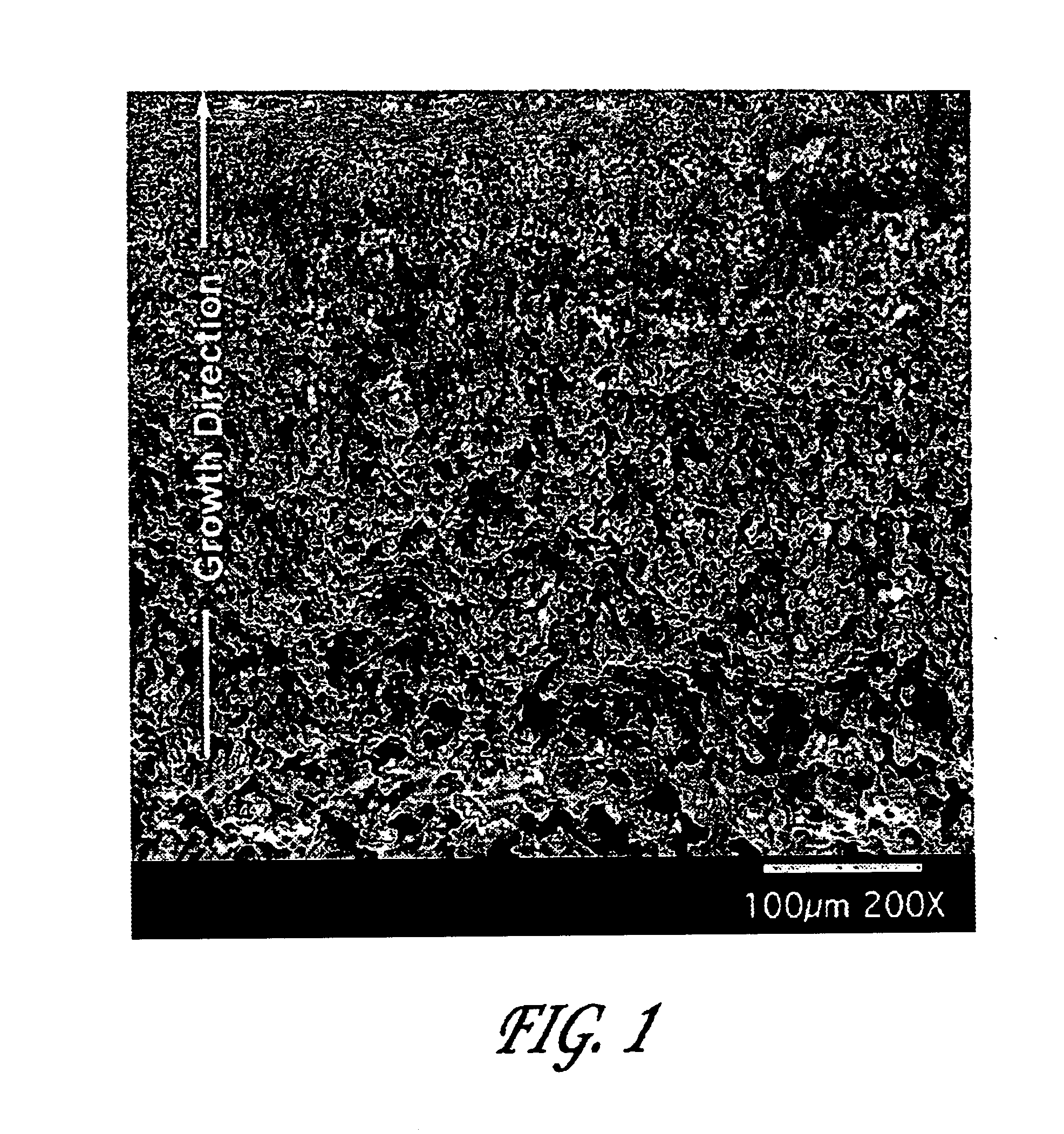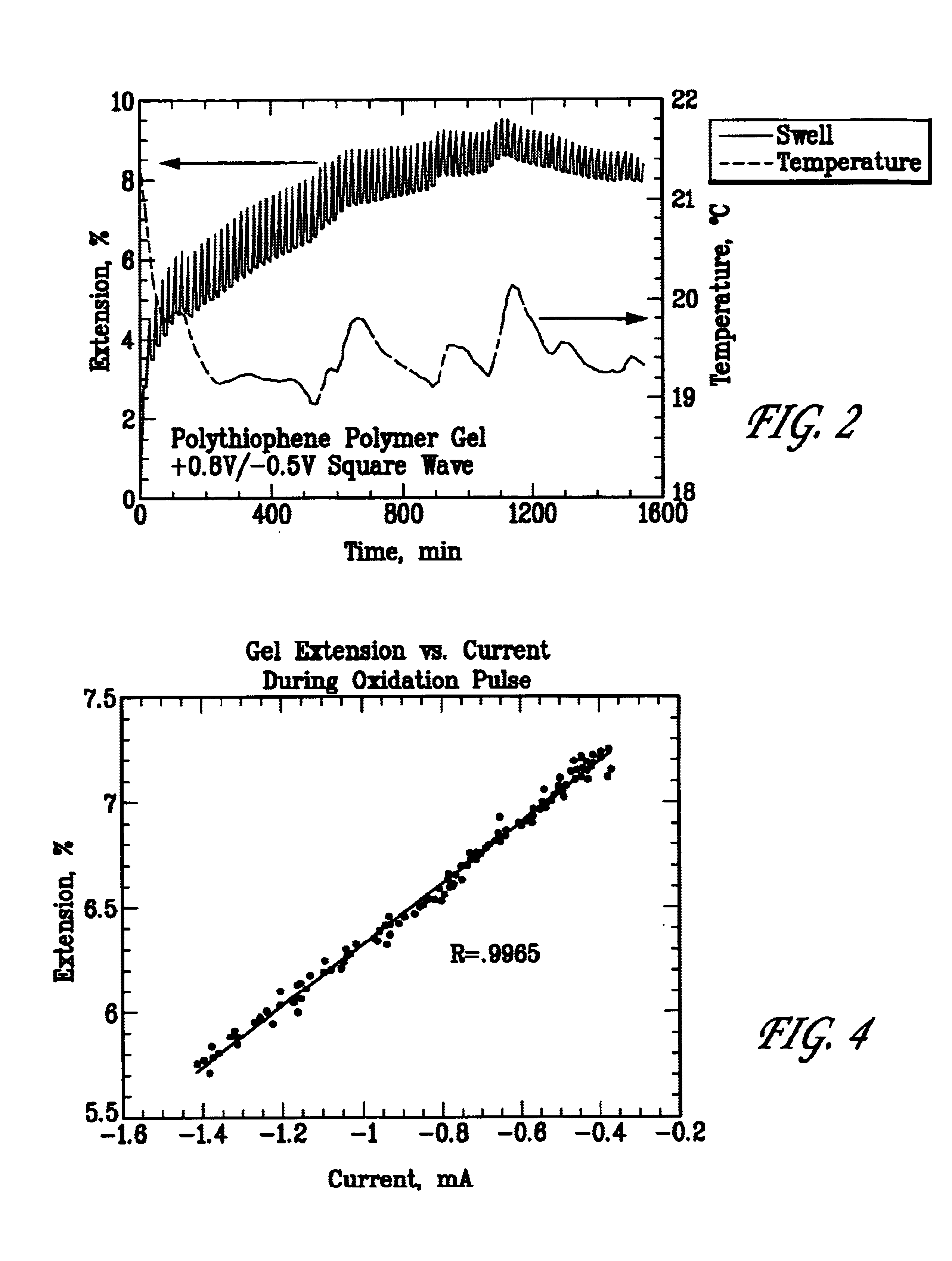Actuator device utilizing a conductive polymer gel
a technology actuator device, which is applied in the field of conductive polymer gel, can solve the problems of not being able to scale down and replicate macroscopic designs, not being able to report the direct measurement of the mechanical response of these materials to electrochemical stimulation, and only being able to design
- Summary
- Abstract
- Description
- Claims
- Application Information
AI Technical Summary
Benefits of technology
Problems solved by technology
Method used
Image
Examples
Embodiment Construction
and Best Mode
The gel of the present invention finds utility as a seal or diaphragm to regulate or control flow through miniature actuator assemblies. In one embodiment, illustrated in FIGS. 6-10, a small cylindrical plug 12 of the gel is formed in a mold or cut from a sheet of the polymer. Electrodes 15, formed by attaching a disk of a conductive porous mesh 14 to an electrode wire 11, as shown in FIG. 6B, are attached at top and bottom surfaces of plug 12, as shown in FIG. 6A, to form plug assembly 10. Alternatively, disk 14 may be a thin metal layer deposited directly onto a portion of the surface of gel plug 12, either by vapor, chemical or particle deposition, or low temperature sputtering.
Once formed, plug assembly 10 is immersed in an electrolyte solution, comprising charge balancing ions and an associated coordinated solvent species molecule. Although other solvent / salt systems are possible, the particular electrolyte system used in the present invention comprised a quaternar...
PUM
| Property | Measurement | Unit |
|---|---|---|
| electrical potential | aaaaa | aaaaa |
| temperature | aaaaa | aaaaa |
| density | aaaaa | aaaaa |
Abstract
Description
Claims
Application Information
 Login to View More
Login to View More - R&D
- Intellectual Property
- Life Sciences
- Materials
- Tech Scout
- Unparalleled Data Quality
- Higher Quality Content
- 60% Fewer Hallucinations
Browse by: Latest US Patents, China's latest patents, Technical Efficacy Thesaurus, Application Domain, Technology Topic, Popular Technical Reports.
© 2025 PatSnap. All rights reserved.Legal|Privacy policy|Modern Slavery Act Transparency Statement|Sitemap|About US| Contact US: help@patsnap.com



